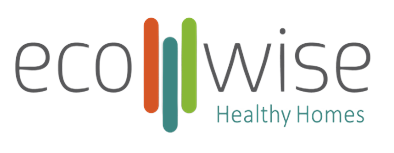Ecowise
HEALTHY HOMES - EHHS
Through the launch of real-time recommendations and the integration of automated interventions, the Ecowise Healthy Homes platform aims to help facility managers and end-users manage facility resources while achieving the highest levels of comfort and energy efficiency.

About ECOWISE
Specific objectives and technological applications
EHHS is a cloud based system, for municipalities and facility managers, providing energy optimisation and monitors indoor conditions.
EHHS achieves 28% energy savings and 22% CO2 saving in buildings by reducing thermal consumption and monitoring indoor health conditions. Scaling to 1.250 buildings in 5 years will allow EHHS to achieve a potential initial saving of over €50M for final users and clients.
Project's main objectives
Tools & Methods
Traditional HVAC systems are inefficient, excess energy usage of up to 30% per household. Systems are based on set point controls connected to centralised HVAC, ignoring the conditions of spaces, personal needs and forthcoming thermal demand, creating unnecessary costs, GHG emissions and unhealthy indoor conditions. . Systems fail to monitor the H&S standards, IEQ, and do not enable monitoring and decision making from end users in relation to health and welfare with repercussions on wellbeing.
The novelty of EHHS is the integration of disconnected technologies in one sole product with a unique value for money in terms of cost optimisation and indoor health standards assessments. EHHS integrates: 1) Connectivity via FiWare smart city architecture for IoT networks and building control systems (ventilation); 2) Predictive Energy+ simulations based on digital BIM/3D models; 3) Dynamic weather and occupant data (Digital Twins); and 4) Cloud microservices for scalability and interoperability.
EHHS is an integrated building control system delivering:
- Connectivity to control systems, IoT networks and HVAC devices
- Integration of hardware and software via cloud architecture using digital replicas (twins) of buildings
- Continuous monitoring and reporting of indoor health conditions;
- Dynamic prediction, optimisation and control for energy/cost savings based on the occupant needs
- Mobile interfaces for visualisation and control
- EU Health and Safety regulation monitoring
Impact
The tool will allow homes to meet European health and safety standards, will avoid intrusive audits, and monitor actions needed to deliver the welfare of the occupants. It will improve indoor air quality resulting in a decrease of 5% cases in respiratory diseases aggravated by bad indoor quality and will improve CO2 saving by 22%. This will have a major impact in reducing premature mortality due to bad indoor air quality in housing heating.
SEEKING SOLUTIONS AND STRATEGIES THAT MINIMISE URBAN AND INDUSTRIAL FOOTPRINTS WITH HOLISTIC LIFE CYCLE APPROACHES
CONTACT us
- comet@comet.technology
- (+34) 930 23 91 26